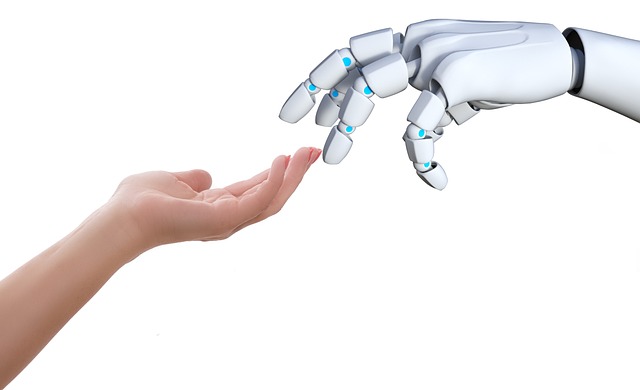Robots have quietly moved from factory floors to front doors. We’re not just talking about high-end manufacturing anymore. Think warehouse runners, grocery restockers, hotel cleaners, and vision-equipped home assistants. The tech is getting cheaper, faster, and more adaptable. What used to be science fiction is now rolling across office lobbies or vacuuming your living room. But speed in adoption hasn’t always meant clarity in design.
Poor interaction design creates tension. Vague prompts, confusing interfaces, and awkward timing all lead to frustration. When a delivery robot blocks an escalator or doesn’t understand a simple voice command, it’s not just a UX flaw—it’s a breach of trust. People expect machines to fit around their needs, not the other way around. When that dynamic flips, user experience collapses.
The smart creators in this space aren’t trying to build robo-overlords. They’re asking the better question: how do we make machines that work with people? Collaboration is the actual endgame. The best systems are the ones that can learn, adjust, and understand the rhythm of human spaces without trying to dominate them.
Perception and Communication Between Humans and Robots
Robots are getting better at figuring us out. Not just processing commands, but watching how we move, talk, and react. Cameras, sensors, and machine learning all come together to help robots pick up on cues we barely notice ourselves. A glance, a pause, a raised eyebrow—robots can now tie those little behaviors to bigger patterns in human intent.
This is what makes context-aware behavior possible. Smart systems aren’t just listening; they’re reading the room. A robot assistant in a hospital knows the difference between a quiet hallway and a code blue scenario. In a home, it recognizes when you’re in a rush versus just casually browsing the fridge. Getting this right matters. It turns robotic interactions from scripted transactions into fluid, intuitive moments.
But behind the scenes, things are still messy. The challenge now is keeping interfaces simple while everything underneath grows more complex. Users want devices that just work. No fiddling through menus, no training the software for hours. The tech might be heavy under the hood, but what we see needs to stay clean. That thin line between power and usability? It’s where great robotics design lives.
Physical, Behavioral, and Emotional Safety in Human-Robot Interaction
As robots move from controlled lab settings into homes, streets, and studios, safety isn’t just a checkbox—it’s the baseline. Physical safety comes first. That means soft materials, reliable sensors, and built-in fail-safes that stop movement before harm is done. If a robot accidentally bumps into you, it should feel more like a pillow than a metal arm.
Then there’s behavioral safety. This isn’t about tech specs—it’s about trust. People are wired to feel safe around things they can predict. Robots that move erratically or over-correct can make users flinch, hesitate, or disconnect. In contrast, vlogging bots or assistive gear with smooth, consistent motion make the experience feel fluid and trustworthy.
Lastly, there’s emotional safety, the nuance most creators overlook. A monotone voice or awkward pause can feel creepy, while thoughtful gestures and tone add warmth and approachability. In vlogging, how a robot tilts its head or pairs a comment with the right hand movement can mean the difference between captivating or alienating an audience. These soft touches aren’t fluff—they’re the future of believable interaction.
Robots are done sitting on the sidelines. In 2024, they’re stepping deeper into real-world roles, especially in high-stakes, hands-on environments. On the manufacturing floor, co-bots are now working side-by-side with humans, handling repetitive or hazardous tasks while keeping ergonomics and safety top of mind. Instead of replacing jobs, they’re reducing strain and letting human workers focus more on quality and oversight.
In healthcare, robots are providing steady-handed assistance at the bedside. We’re talking medication runs, lifting support, even calming routines for patients. The focus is less on flash, more on comfort and consistency. Nurses and doctors have a bit more space to breathe, and patients get more responsive, less intrusive care.
Search and rescue is where autonomy is getting its most intense test. Robots are entering disaster zones on limited visibility and unstable terrain. They’re mapping routes, locating survivors, and making real-time decisions without waiting for human instructions. It’s not about dramatic flair but doing the work fast and smart when seconds matter.
These robots aren’t taking over — they’re filling in the gaps. The ones we’ve been working around for years.
Soft robotics is stepping into the spotlight, and it’s not just because the tech looks cool on camera. It’s because softness actually matters. Gentle grips mean machines don’t crush or stress the objects or people they interact with. In healthcare, food handling, or home assistance, that softer touch equals fewer accidents, better trust, and smoother performance.
Human-like motion also plays a huge role here. Movements that feel natural are easier to anticipate, especially in shared environments. Think of a robotic assistant passing a tool. If it moves like a person would, it doesn’t startle. The moment feels intuitive. That kind of predictability is critical in spaces where safety and comfort overlap.
It’s not about dialing back power. It’s about putting control where it counts. Curious how this trend is evolving? Check out the full breakdown in Latest Trends in Soft Robotics and Their Applications.
Data Privacy, Trust, and Control in Relational Robotics
As relational robotics becomes more embedded in daily life, from home assistants to care bots, an old question looms louder: what are we giving away in return for convenience? These machines run on data. Every interaction—voice, gesture, routine—is a data point. And unless there’s transparency in how that data is collected, stored, or shared, users are essentially handing over parts of their private lives without much consent.
Then there’s the trust factor. People tend to humanize robots that mimic empathy. But when these machines give the illusion of understanding emotion, it’s easy to over-trust. We assume they know us. That assumption creates dangerous ground, especially in sensitive settings like eldercare or mental health support. There comes a point where automation shouldn’t be allowed to replace human judgment, but people are letting it anyway.
Machine learning makes it murkier. These systems are trained on biased data. They inherit human flaws but mask them behind mechanical precision. The result? We let algorithms decide what’s appropriate, helpful, or normal—without always knowing where that framework came from. In the end, the question isn’t just what these robots can do. It’s who programmed their choices and why that matters.
Mixed Teams: Humans and Robots Co-Planning Tasks
Human-robot teams aren’t some sci-fi thing anymore—they’re operational, especially in logistics, manufacturing, and even healthcare. But the biggest shift isn’t about robots doing more. It’s about robots becoming better teammates. That means co-planning, task-sharing, and working side-by-side in a way that feels more like collaboration and less like automation.
The new frontier is emotional intelligence. Robots are learning to read faces, interpret tone, and react accordingly. That doesn’t mean tears and hugs—it means smoother handoffs, fewer errors, and more productive interactions. In high-stakes settings like elder care or emergency response, simple emotional cues can make all the difference.
Here’s the bottom line: making human-robot interaction safer isn’t just about better sensors or smarter code. It’s about recognizing the human behind the interaction. If robots are going to support us, they need to understand us—at least a little. That responsibility sits with designers, developers, and yes, the rest of us who decide whether to trust the machine.


 Lorissa Ollvain is a tech author and co-founder of gfxrobotection with expertise in AI, digital protection, and smart technology solutions. She is dedicated to making advanced technology accessible through informative, user-focused content.
Lorissa Ollvain is a tech author and co-founder of gfxrobotection with expertise in AI, digital protection, and smart technology solutions. She is dedicated to making advanced technology accessible through informative, user-focused content.

